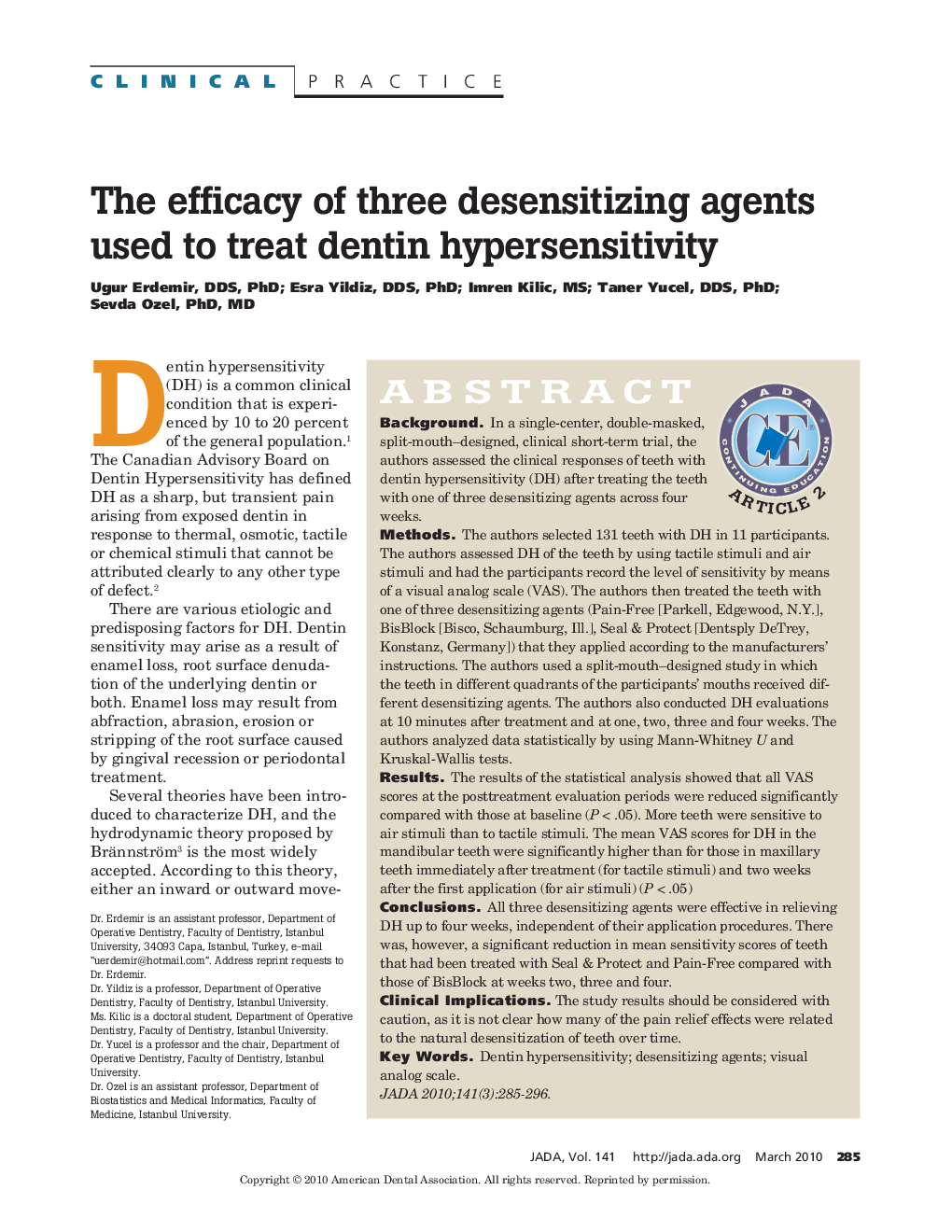| Article ID | Journal | Published Year | Pages | File Type |
|---|---|---|---|---|
| 3138774 | The Journal of the American Dental Association | 2010 | 12 Pages |
ABSTRACTBackgroundIn a single-center, double-masked, split-mouth–designed, clinical short-term trial, the authors assessed the clinical responses of teeth with dentin hypersensitivity (DH) after treating the teeth with one of three desensitizing agents across four weeks.MethodsThe authors selected 131 teeth with DH in 11 participants. The authors assessed DH of the teeth by using tactile stimuli and air stimuli and had the participants record the level of sensitivity by means of a visual analog scale (VAS). The authors then treated the teeth with one of three desensitizing agents (Pain-Free [Parkell, Edgewood, N.Y.], BisBlock [Bisco, Schaumburg, Ill.], Seal & Protect [Dentsply DeTrey, Konstanz, Germany]) that they applied according to the manufacturers' instructions. The authors used a split-mouth–designed study in which the teeth in different quadrants of the participants' mouths received different desensitizing agents. The authors also conducted DH evaluations at 10 minutes after treatment and at one, two, three and four weeks. The authors analyzed data statistically by using Mann-Whitney U and Kruskal-Wallis tests.ResultsThe results of the statistical analysis showed that all VAS scores at the posttreatment evaluation periods were reduced significantly compared with those at baseline (P < .05). More teeth were sensitive to air stimuli than to tactile stimuli. The mean VAS scores for DH in the mandibular teeth were significantly higher than for those in maxillary teeth immediately after treatment (for tactile stimuli) and two weeks after the first application (for air stimuli) (P < .05)ConclusionsAll three desensitizing agents were effective in relieving DH up to four weeks, independent of their application procedures. There was, however, a significant reduction in mean sensitivity scores of teeth that had been treated with Seal & Protect and Pain-Free compared with those of BisBlock at weeks two, three and four.Clinical ImplicationsThe study results should be considered with caution, as it is not clear how many of the pain relief effects were related to the natural desensitization of teeth over time.
